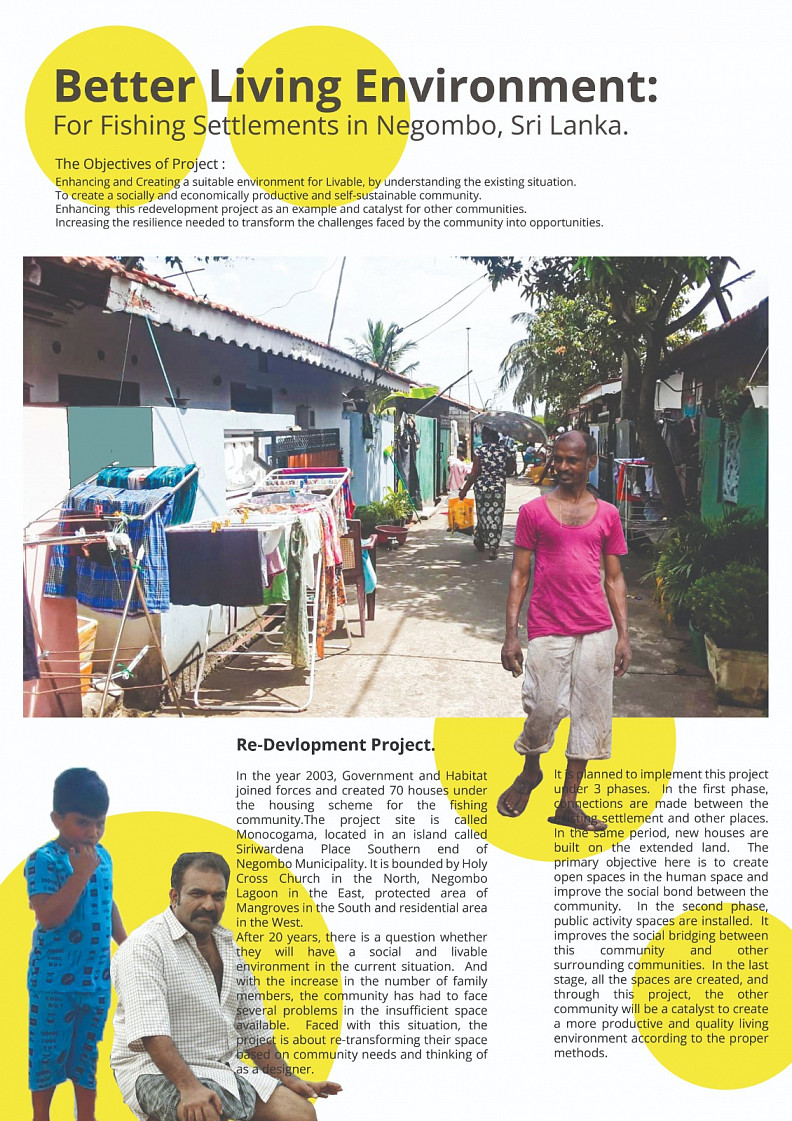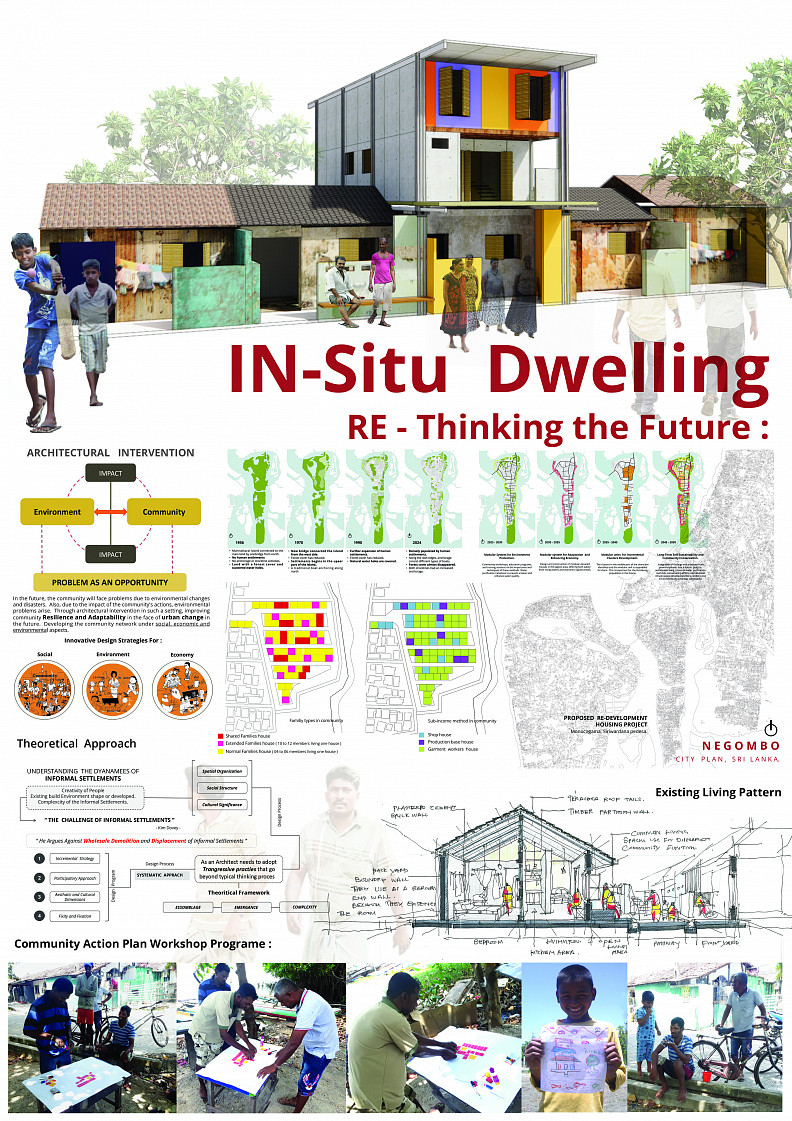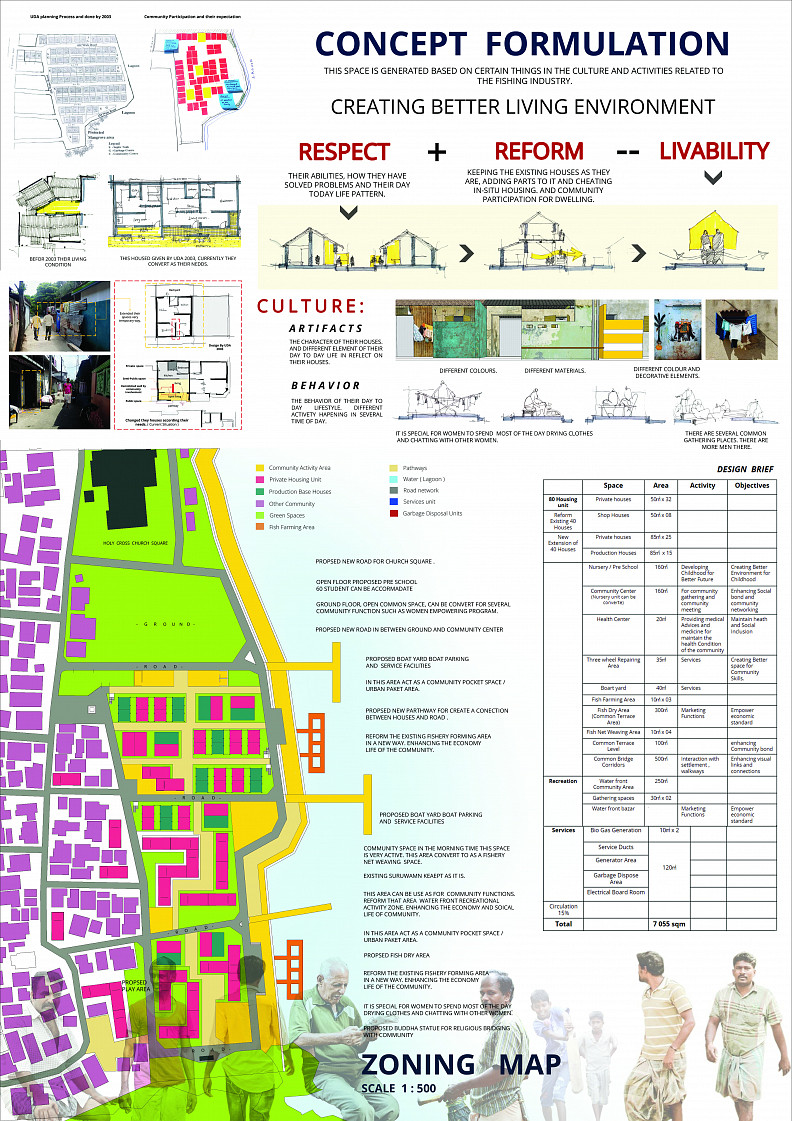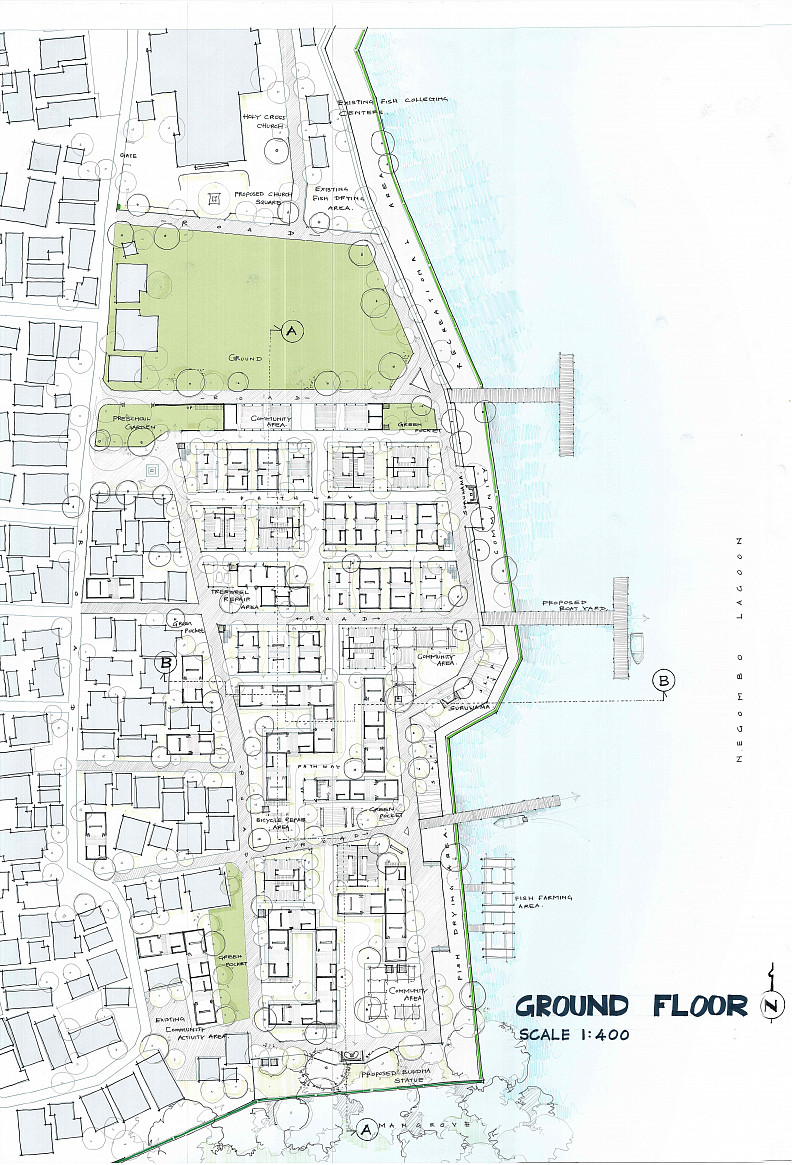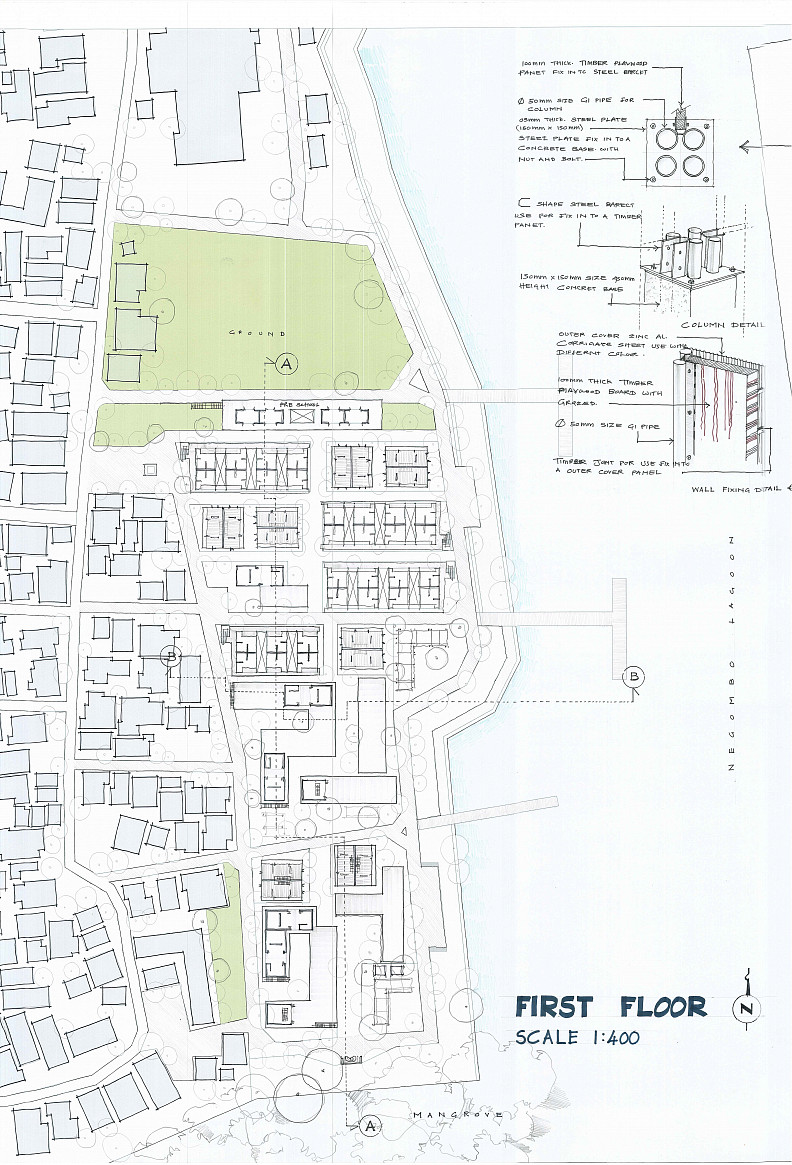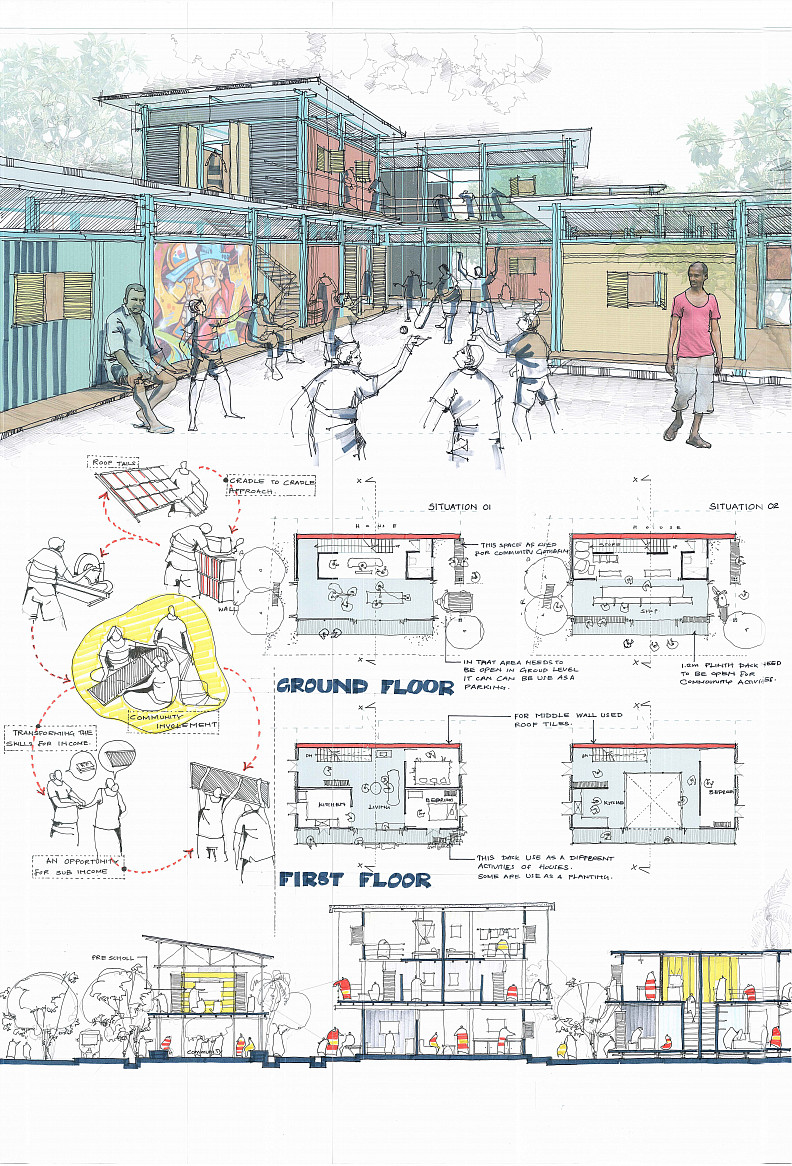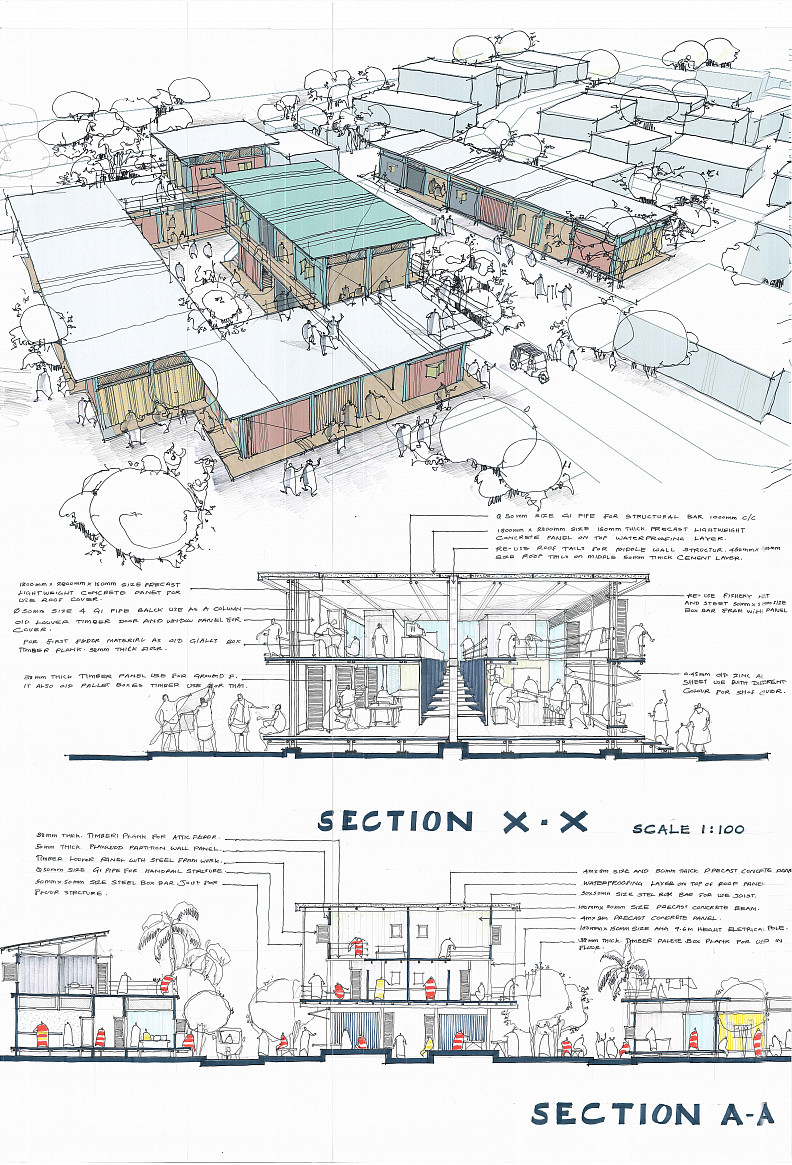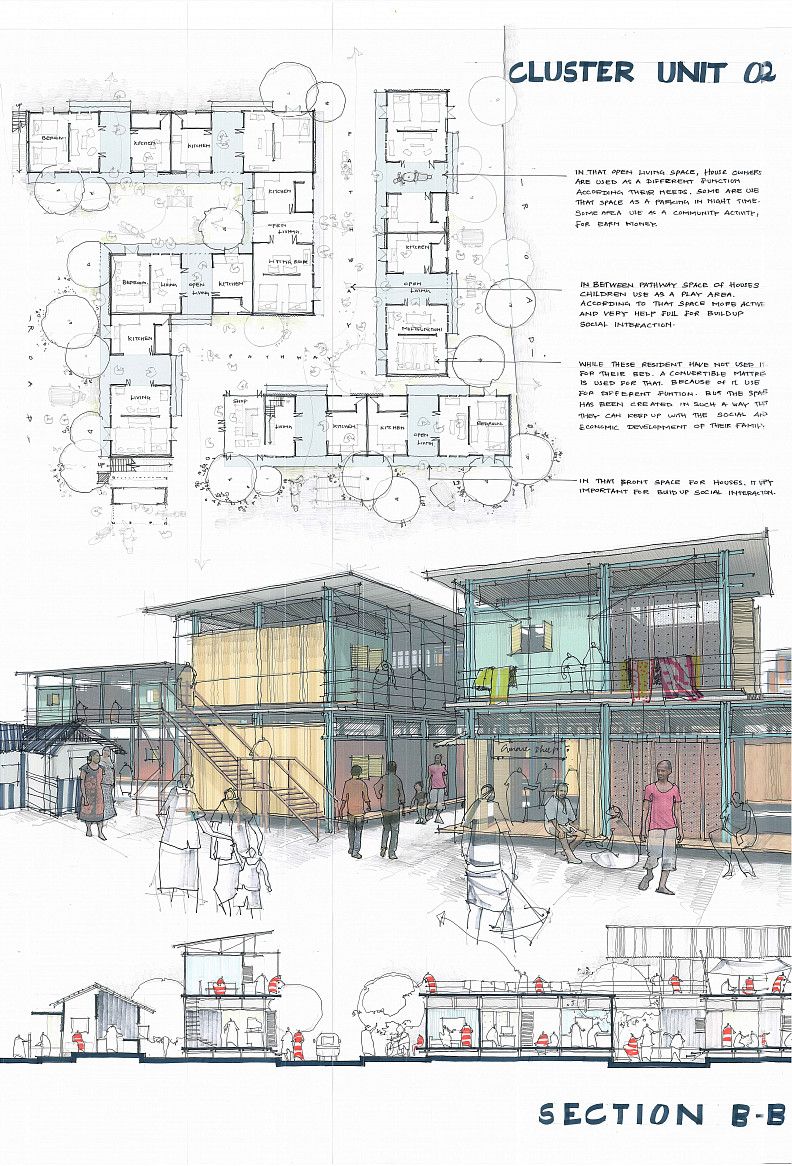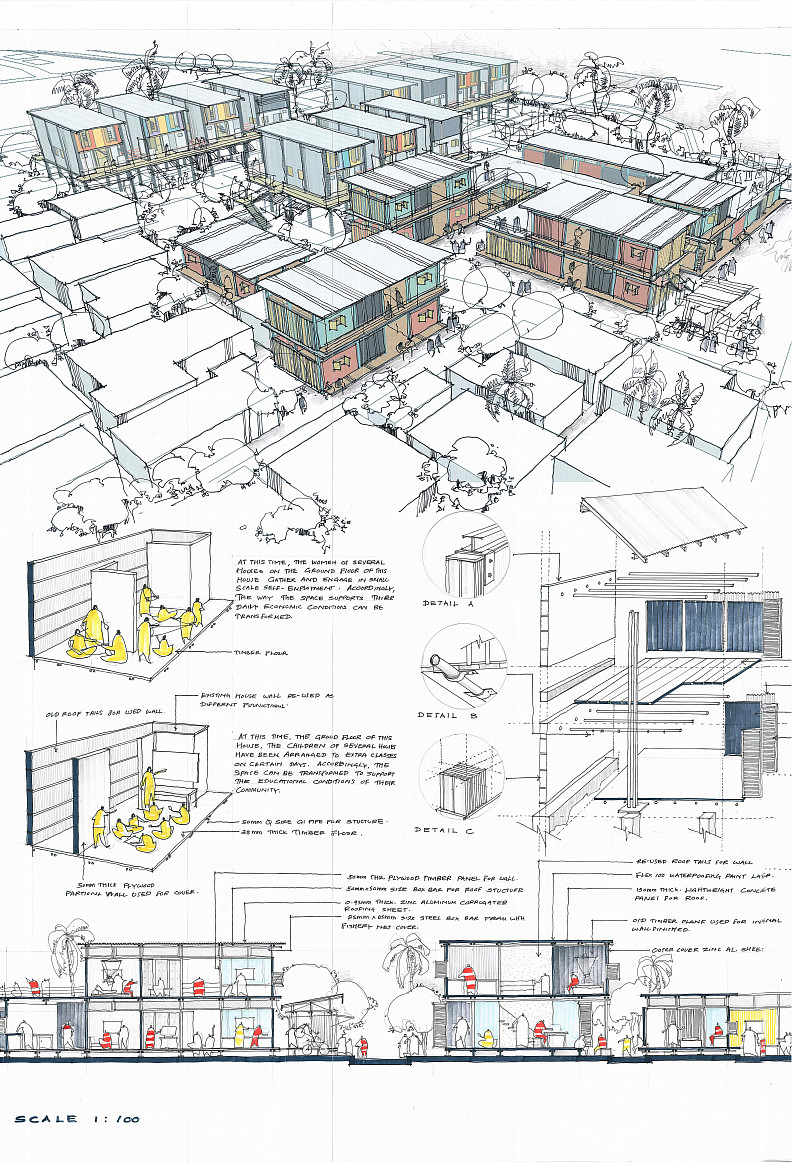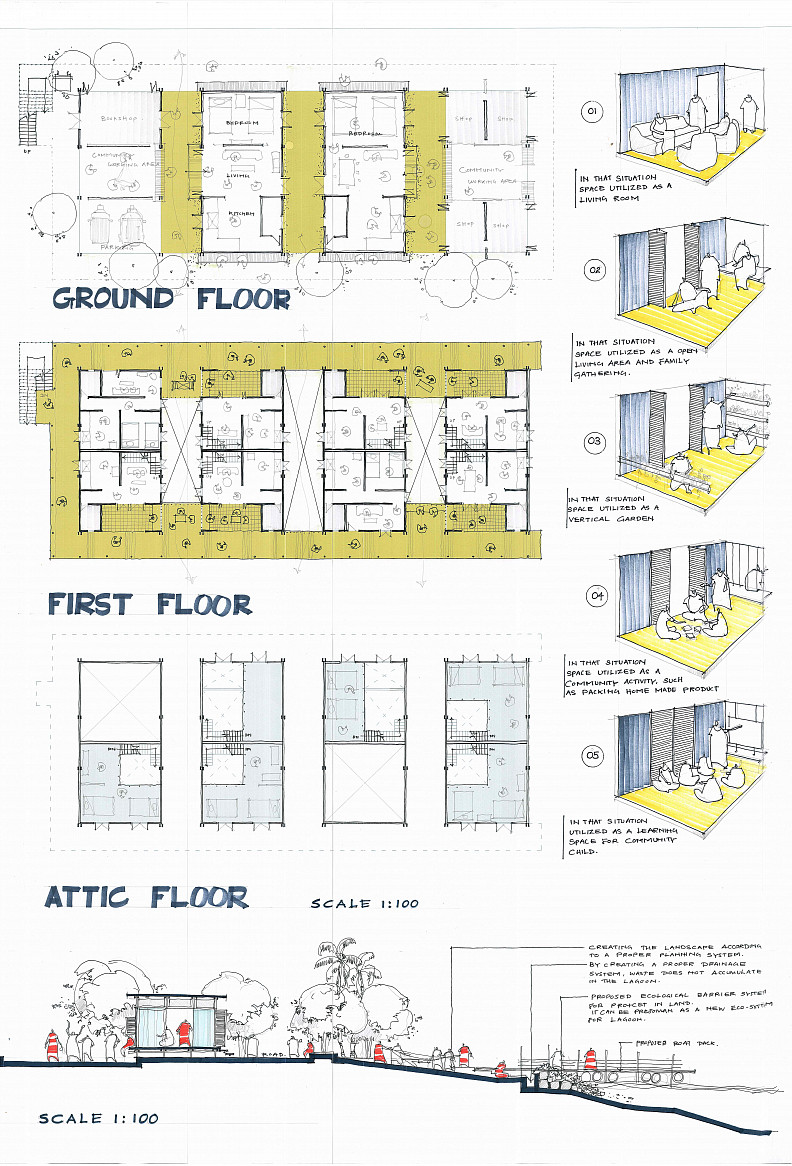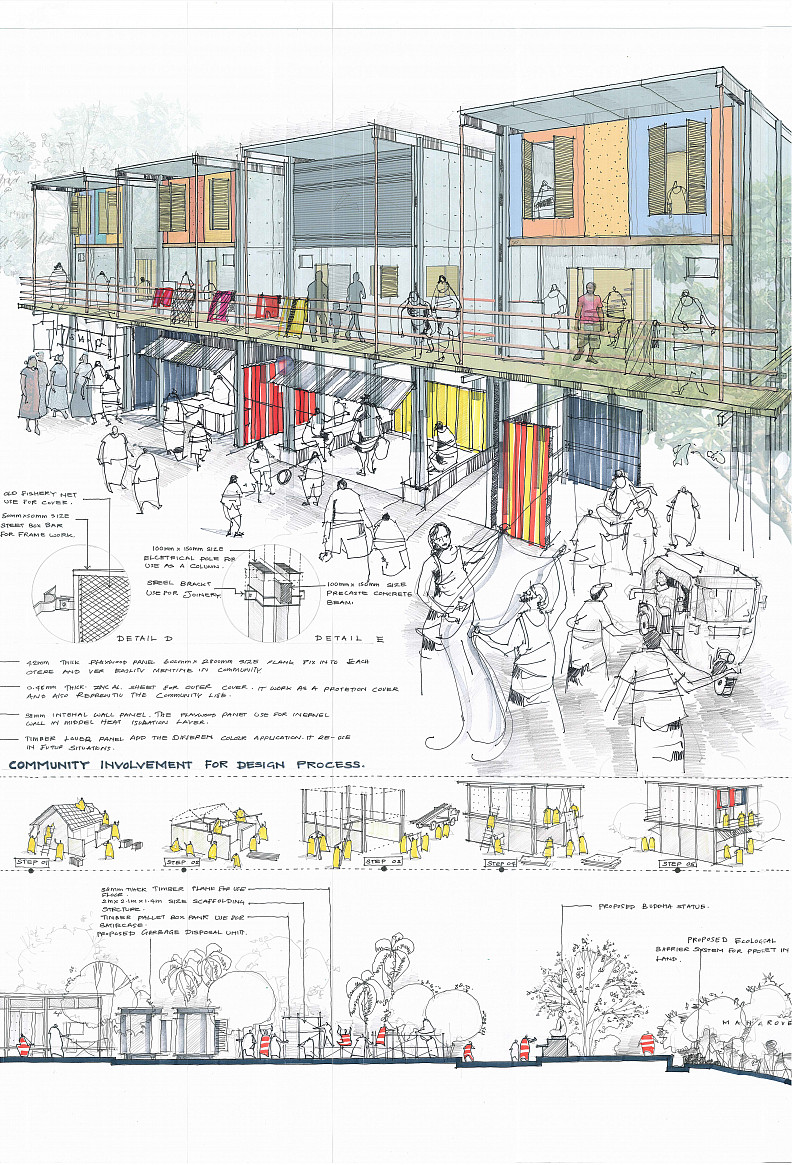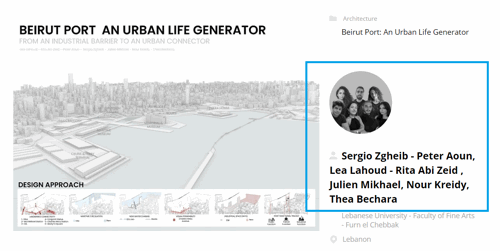“ RE-Thinking the Future ” IN-Situ Dwelling.

Project idea
City of Negombo is strategically located on the Northern periphery of Colombo Metropolitan Region and along the coastal belt of Sri Lanka and almost below the sea level. It is located 30 Km. from Colombo, the capital of Sri Lanka and 6 Km. from the Katunayake International Airport. There are 150,000 inhabitants live in Negombo. Since Negombo town has been developed along with the lagoon, it has become one of the main fishing towns of Sri Lanka and its economy is based on fishing and fishing related activities. It produces 16 % of the national fish harvest. 30% of population of Negombo depend on fishing.
With upsurge of civil unrest in 1983 in Sri Lanka, migration of fishing families to fishing areas in Northern and Eastern provinces as permanent settlers and for seasonal fishing could not be continued. Most of the fishing families that had already settled down in the areas had to return to their native places in Negombo for safety. The final result of this situation was emergence of slums and shanties along the coastal belt particularly in the fishing villages around the Negombo Lagoon. These settlers living under the sub human conditions due to the lack of minimum housing sanitary facilities, essential infrastructure and urban services. They were forced to encroach the state land and settle down there due to the sole reason that they do not want to move away from the lagoon or sea. Although they were offered apartments of two or three storey flats at the cost of the government, they even refused. All the plans are made for the betterment of the livelihood of the society and high priority should be given to find a suitable solution for these issues.
Urban Development Authority, what does development mean? According to the designer, UDA build a building and call it development. The main reason for this criticism is this housing complex, which was created in 2003. Houses are designed without any sense of community.
The project program is to engage with the community and build the housing planning process. The community participatory planning process is fundamental here. The housing complex is planned to be constructed in several stages. Houses will be created for 80 families. In addition, a community center will be built. In this process, community input is planned in a way that increases the knowledge of the communities and their ability to collect shares for housing based on their needs in the future. when designing community-based housing, it is imperative to understand what they are building within the architectural space. It is only in the social and cultural bonds of the people that something unique to them is created. And the flexibility to manipulate the space as needed is essential.
The Objectives
Enhancing and Creating a suitable environment for Livable, by understanding the existing situation.
To create a socially and economically productive and self-sustainable community.
Enhancing this redevelopment project as an example and catalyst for other communities.
Increasing the resilience needed to transform the challenges faced by the community into opportunities.
Project description
Better Living Environment For Fishing Settlements In Negombo, Sri Lanka.
In-Situ Housing Re-Development Project.
In the year 2003, Government and Habitat joined forces and created 70 houses under the housing scheme for the fishing community.The project site is called Monocogama, located in an island called Siriwardena Place Southern end of Negombo Municipality. It is bounded by Holy Cross Church in the North, Negombo Lagoon in the East, protected area of Mangroves in the South and residential area in the West.
After 20 years, there is a question whether they will have a social and livable environment in the current situation. And with the increase in the number of family members, the community has had to face several problems in the insufficient space available. Faced with this situation, the project is about re-transforming their space based on community needs and thinking of as a designer. It is planned to implement this project under 3 phases. In the first phase, connections are made between the existing settlement and other places. In the same period, new houses are built on the extended land. The primary objective here is to create open spaces in the human space and improve the social bond between the community. In the second phase, public activity spaces are installed. It improves the social bridging between this community and other surrounding communities. In the last stage, all the spaces are created, and through this project, the other community will be a catalyst to create a more productive and quality living environment according to the proper methods.
Design Process :
Community participation in the design process is involved in each design phase. The specialty of this is to get the community's social, cultural and economic understanding and contribute to the design process. The purpose of this is to provide the community with an effective design using depleting raw materials with short-term and long-term solutions under a sustainable concept of building community-based designs that go beyond traditional architectural processes of creating spaces.
In a re-development housing project like this, it is very important to understand the existing situation. There, it is very important to study the daily life of the community, social and cultural aspects, economic status and the problems they face and how they have solved those problems through their knowledge. A fundamental part of the study within the design process was to understand how their homes had changed based on the changes at certain times in their lives. To what extent is the space supportive of their family's social, economic and cultural growth? By understanding whether or not, it is important to design the spaces built under the new concept in such a way as to be able to respond to the future elements.
A user-centric approach between community participation and design lays the foundation. The other important thing is that it creates a possible understanding between the community and the designers.The project program is to engage with the community and build the housing planning process. The community participatory planning process is fundamental here.
Technical information
An international NGO called ‘Habitat for Humanity for Sri Lanka’ provide the loan facilities for the households at free of interest. The loan amount for about 660$ (200,000 LKR) per household and have to be repaid in the period of 10 years.
Architects, urban planners, environmentalists, technologists, product designers and community participation will create the ground floor. The basic needs and expenses for that will be borne by the government. Estimated cost is LKR 380,000.00 (for one house) LKR 250,000.00 for modification of existing houses. (For one house) According to their need, community can earn money and build the upper floor it's necessary atmosphere is planned. Accordingly, this is planned as an affordable and incremental housing project.
